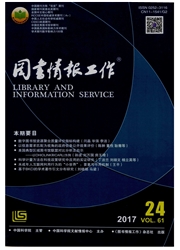

 中文摘要:
中文摘要:
[目的/意义]叙事型文化遗产具有丰富的隐含知识与语义信息,仅采用图像、文字等数字化形式难以描述故事元素间复杂的关联与模糊语义,因此探究叙事型文化遗产的有效组织与表示具有重大研究意义。[方法/过程]围绕叙事型文化遗产,利用语义数据模型提出基于角色关联的知识表示方式,构建具有多粒度、多角度且语义流畅的知识表示框架。此方法选取故事中的主要元素作为知识因子,通过聚集与特化的抽象关联关系表示知识因子间的角色关联,形成自然的图结构。[结果/结论]基于角色关联的知识表示方式具有语义自然、可扩展性强、支持多样化检索等优势,可解决现有知识表示方法存在的角色缺乏情境依赖与表示角度单一问题。
 英文摘要:
英文摘要:
[ Purpose/significance ] It is difficult to describe the complicated association and fuzzy semantics in nar- rative cultural heritage by only using images or files, because they have rich implicit knowledge and semantic information. Therefore, it is of great significance to explore the effective organization and representation of narrative cultural heritage. [ Method/process ] This paper constructed a multi-granularity, multi-angle and semantic-fluent knowledge representation framework based on the role-link knowledge representation for the narrative cultural heritage. This representation selected the main elements of the story as knowledge factors. mong knowledge factors. Finally, this paper formed method has the advantages of semantic nature, strong lems such as the lack of context dependence, single sentation method. Aggregation and specialization were used to represent the role-link a- the representation structure in a graph. [ Result/conclusion ] This extensibility, support for diversified retrieval, and also solving prob- representation perspective occurring in the existing knowledge representation method.
 同期刊论文项目
同期刊论文项目
 同项目期刊论文
同项目期刊论文
 期刊信息
期刊信息
